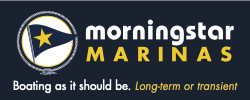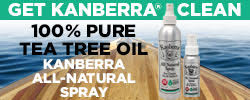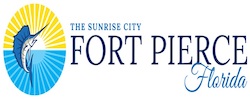Reports From Beaufort Town Docks (Statute Mile 201)

SSECN Contributing Editor – Captain Jim Healy
We bought our Sanctuary in June, 2004. We finished re-fit, commissioned and splashed by the last week of September, 2004. New to boating and cruising, we spent the winter of 2004-05 in North Carolina, first in New Bern and then in Morehead City. During that winter, we also discovered Beaufort, a rustic and historic seafarers and mercantile community.
Beaufort is not far from the ICW route, but we haven’t visited there in several years. We do stop in Morehead City so I can visit the very best marine `toy store’ on the US East Coast, `Ace Marine and Rigging,’ which is just a short walk across Arundel Street from the Sanitary Restaurant’s dock. This trip northbound, we decided to divert and visit Beaufort.
The many mercantile establishments in Beaufort carry a full range of upscale millenaries, clothing, gifts, bric-Ã -brac, curiosities and books. Merchandise prices are high; we observed `full retail price’ in all shoppes, and `well above MSRP’ in many. There is a very nice Maritime Museum on Front St. Since we last visited Beaufort, the Post Office has relocated, an inconvenience for those afoot. Local restaurants offer a fine range of victuals. We visited Clawsons for lunch, and were disappointed to find they have dropped their signature `Dirigible’ from their menu. Fortunately, their selection of craft beers somewhat compensated; somewhat. We thoroughly enjoyed an excellent ribeye steak dinner at the Grocery Company on Queen St.
Access to the `Beaufort City Docks’ from the Beaufort Inlet is easy. During our visit, two megayachts made overnight stops. Approach depths to 12 ft and slip depths to 7 ft are fine for cruising boats. Taylor Creek currents are moderate. The marina is exposed to winds with an easterly component. The facility has widely separated infrastructure features. Modern, floating docks are in good condition. In-slip fueling and pumpout are available. Fairways and slips are commodious. Shower house/bathrooms are clean and functional in a 1940s high-school locker room style, but are located at the far western end of the facility, so can be a long walk. Complimentary wi-fi is provided and adequate for email and web browsing. There is a well worn courtesy car. Courtesy car use is complimentary and car availability was excellent; finding a place to park it on return was tedious. Net transient pricing (dockage plus electric) is above regional averages, even after organization discounts are applied. On a scale of 1 – 10, 10 being excellent, I’d rate the marina facility as a 7; OK, but overpriced.
We arrived at the Beaufort City Docks at noon on Thursday. We stayed two nights and felt we had had two very different customer experiences. The reservation process was easy. When we arrived, slip assignment went smoothly. Docking assistance and electric set-up was excellent. It was our impression that there are two separate `crews’ of dock attendants and office staff which I will call `Team 1’ and `Team 2.’ Team 1 – our Thursday experience – was welcoming, friendly, responsive and helpful. They offered local information they knew we would want but did not know to ask about. They smiled and laughed a lot. Team 2 – our Friday experience – was markedly different. They were indifferent and remote. There was no smiling. We asked for information about the Beaufort drawbridge operation and the northbound `Russell Slough’ (pronounced: SLEW) navigation channel. `Team 2’ pointed to a sheet on the wall. No Captain’s handout was available. We were entirely `on our own’ to find a place to park the car. We circled the town for 20 minutes, and finally found a spot two blocks from the marina. `Team 2’ made it clear – `if looks could kill’ – they were annoyed that we had left the car `so far away.’ Our net is, the customer experience that a transient boater might have at the Beaufort City Docks is mixed, and seems to depend on which crew of attendants (and which attitude) is on duty. On a scale of 1 – 10, 10 being excellent, I’d rate `Team 1’ as a 10. `Team 2,’ well, not so much.
Well done review, though I would caution that the term `moderate’ for the current in Taylor Creek probably depends on when you hit it. I have seen large powerboats have difficulty getting in and out when the current is full tilt and the wind is blowing. My advice to sailors is to time your arrival or departure for slack tide and wind, if at all possible. Anchoring for a short while to await better conditions can sometimes make the difference between a safe landing and an expensive mistake. Also, this is often the first strong current docking experience for many ICW newbies coming from the north where marinas tend to not be situated in current-swept locations for the most part. It’s good practice for places further south on the ICW where currents can be even stronger.
John kettlewell
We have stopped at Beaufort Town Docks many times in the past. The last time was in April 2010. Since then, we have regretfully by- passed this wonderful town. We simply will not pay the exorbitant price for a marina that has so little to offer but a superb location. On our 2009- 2010 cruise to Florida, Beaufort Town Docks was the MOST expensive marina we stayed in in four months. When we were there the last time, it was almost empty. Did the cost have something to do with this?
Norman Mason
Peggy Sue, Monk 36
Norfolk, VA
Having just returned from three nights in Beaufort I can report that we had a great time. The dock masters were extremely cordial and caring and handled any need. They checked on us several times and as we watched others come and go they paid them the same attention. Beaufort remains our favorite destination, besides Ocracoke, on the North Carolina coast.
John Rebholz
Just4Shell
I arrived at Beaufort Marina on Fri. and experienced crew #2. I totally agree with Jim that there seemed to be an attitude. I think everybody not only wants to deal with competent dock helpers, which crew #2 certainly was, but also wants to feel welcome and treated like the reason for their employment instead of an interruption to their day.
Joe Apicella
Just amazes me as the the pettiness of many boaters..sometimes I feel reading this various reports that boaters expect these docks to be 5 star hotels with all the amenities of them. If i can talk to someone, make a reservation, someone meets to grasp a line , and get my power plugged in’¦.i am happy.
I will bet if i flew into any airport in any city, I would be standing around figuring out what and where.
PS: BEEN at these docks several time and enjoyed the experience which it is if the current is running!
Larry Hemmerick
I’ve gone to Beaufort Town Docks since the 90s. Know it from dock and shore.
1. It’s expensive by comparison to all other locations within 200 miles.
2. Roll the dice on whether they’re friendly or not. Honestly.
3. The bath/shower by comparison to other locations is horrible.
4. Great location.
5. Shops are tourist traps, not for bargain seekers.
6. Some of the best restaurants around. But you have to look and ask.
If they fix the showers to compare with other local marinas, and get rid of some of the goober, huckster dock-hand behaviors, they’ll be awesome. Not $2.75 awesome, but pretty awesome. Many of their staff are very good, helpful folks, but they’ve got a knucklehead or two they should wish `good luck in your future endeavors’.
Ben Matthews
Beaufort Docks has a great location adjacent to a very nice town. We stayed here one night, and the dockhands were courteous and helpful. We dined at the Blue Moon Bistro, and had a wonderful meal. Walking the town and taking in the shops was easy, and the marina had a loaner car we used to provision. We did not use the showers or laundry, so can’t comment on them. The docks are in decent shape, and easy in and out if you know how to play the current.
About $140 for one night (for a 48′ trawler), however, is a bit steep. Bald Head Island Marina just south was $100 a night. But, due to the location, the owner gets his price, and such is life. My only complaint was the pumpout. First, the hose was not long enough to reach both sides of my boat (I have two tanks and the caps are port and starboard). After untying and turning the boat around for the second tank, I was charged $10 per tank for a total of $20 for the pumpout. While $20 is not going to break the bank, it left a bad taste and is indicative of poor management. Had the pumpout dock and hose been adequate to handle the situation it would be less obtrusive (even though most pumpouts have been free with a slip rental), but the owner should not be surprised at some of the more negative reviews here and elsewhere. It is the little things which can turn a positive experience into a poor one. With that said, I still give the marina four out of five stars, based on our overall positive experience.
Berwick Duval
Click Here To View the North Carolina Cruisers’ Net Marina Directory Listing For Beaufort Town Docks
Click Here To Open A Chart View Window, Zoomed To the Location of Beaufort Town Docks





















 The Salty Southeast Cruisers’ Net is very pleased and honored to welcome veteran cruiser, Captain Jim Healy, aboard as our first “Salty Southeast Cruisers’ Net Contributing Editor.” Many of you know Jim from his participation in MTOA and various on-line nautical forums. Many are the cruisers who have sought Jim’s advice about computers, networking and wi-fi aboard.
The Salty Southeast Cruisers’ Net is very pleased and honored to welcome veteran cruiser, Captain Jim Healy, aboard as our first “Salty Southeast Cruisers’ Net Contributing Editor.” Many of you know Jim from his participation in MTOA and various on-line nautical forums. Many are the cruisers who have sought Jim’s advice about computers, networking and wi-fi aboard.











Be the first to comment!